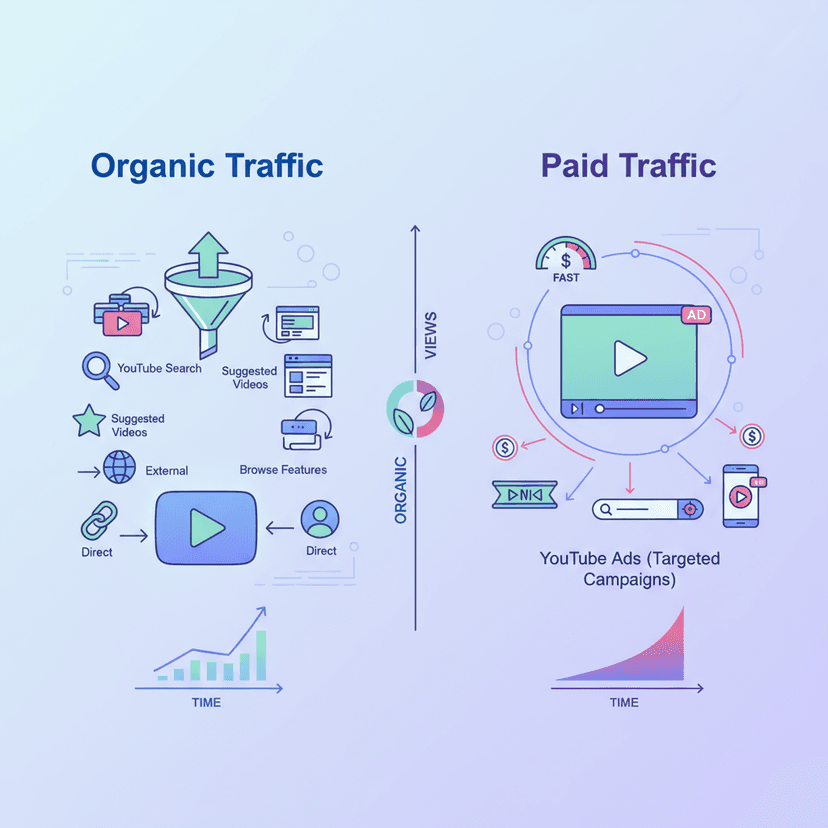Content that follows trends, or trending content, is a highly popular presentation format in the digital world. It often creates engagement and receives good feedback from consumers. One of the important tools that marketers and content creators commonly use to find and track trends is Google Trends. In this article, we will understand what Google Trends is and how to apply it to create content that effectively meets SEO goals. We will also delve into techniques for using trends to elevate your digital marketing strategy.
What is Google Trends and Why is it Important for SEO Strategy?
Google Trends is a tool that allows us to see the popularity of various search terms on Google over time. It is a valuable source of information for digital marketers and content creators because it helps them understand what people are searching for, what they are interested in, and when different topics receive the most attention.
Using Google Trends in an SEO strategy has many benefits, including helping to plan content creation and increasing brand awareness and search efficiency. This can be achieved simply by aligning content with what people are currently interested in.
How to Use Trends to Adjust SEO Strategy
1. Create Content That is Trendy and Relevant to What’s Currently Popular
Creating content based on high-search keywords often comes with high competition. However, applying Google Trends can help you discover topics that are gaining popularity but haven’t yet reached peak competition. Although this method requires more dedication and effort, it opens up better opportunities to create unique and distinctive content. Here’s how you can do it:
2. Improve Existing Content with Trending Keywords
Google Trends can help you find keywords related to your existing content or those that are gaining popularity. Improving existing content with these keywords can quickly increase content performance. Here’s how you can do it:
- Use Google Trends or other tools to find keywords related to your content and that are currently popular.
- Improve existing content by incorporating these newly discovered keywords, such as in the main title or subheadings.
- Ensure that the new keywords have the potential to reach a larger audience than the original keywords.
3. Plan Content for Recurring Trends
This approach focuses on using historical data to predict recurring trends during specific times of the year, such as holidays. Unlike the first two methods, which focus on quick action, this is a strategic advance planning approach. You can follow these steps:
- Analyze in-depth data, study past traffic and periods of high engagement.
- Use trend analysis tools to find patterns of recurring trends and when they occur.
- Set up alerts, define growth criteria, such as annual growth percentage, to receive notifications when a trend begins to appear.
- Prepare content in advance by creating content ready before the trend reaches its peak.
4. Use Trends for Broader Marketing Activities
Creating content from trending topics can enhance marketing effectiveness, especially in areas like digital PR and influencer marketing. Strategically using trends can strengthen brand image, build networks, and increase sales.
You can start by analyzing trends using various tools and then creating content that aligns with those trends. You can add credibility to your content by presenting in-depth information, providing expert opinions, or collaborating with influencers who have a brand image that aligns with your brand. Additionally, using keywords and hashtags intelligently can increase the chances of creating engagement and awareness online.
5. Create and Drive Trends
Brands can use category-level or product-type trend data to create unique trends or link them to their brands. This approach is popular in the cosmetics and fashion industries, where they create new trends or build upon existing ones. When a brand successfully creates a trend, it is difficult for competitors to imitate.
Trend creation can be done in various ways, starting with participation in online communities related to the brand or product, coupled with organizing events that provide knowledge and create interest. For example, live streaming on social media. Also, creating UGC content is another effective way to drive trends. Finally, brands may consider extending growing trends on one platform to another to increase the chances of creating buzz and awareness on a wider scale.
Conclusion
This article has answered the question of what Google Trends is and pointed out that using Google Trends in an SEO strategy can help create content that is modern, interesting, and meets the needs of the audience even better. Whether it’s creating new content, improving existing content, or planning for future trends, Google Trends is a very useful tool for making SEO strategies more effective. By using Google Trends intelligently, brands can stand out in a competitive market instead of following the same old strategies as competitors. They can become leaders in the industry and build genuine connections with their communities. By integrating trends with SEO strategies, you can not only improve rankings but also create valuable and engaging content for your audience.
About Relevant Audience
We are Relevant Audience, a Digital Performance Marketing Agency specializing in SEO and one of the Digital Agency offering comprehensive digital marketing services to support businesses in reaching their target audiences at the right time, place, and device.
Our services cover everything from SEO services, Search Marketing, Social Media Ads, Search Ads to Influencer Marketing, and we are also a SEO Company that is a Google Partner. Our team consists of specialists ready to provide consultation and find solutions that meet business needs.
Contact us for more information, consult online marketing
Tel: 02-038-5055
Email: info@relevantaudience.com
Website: www.relevantaudience.com







